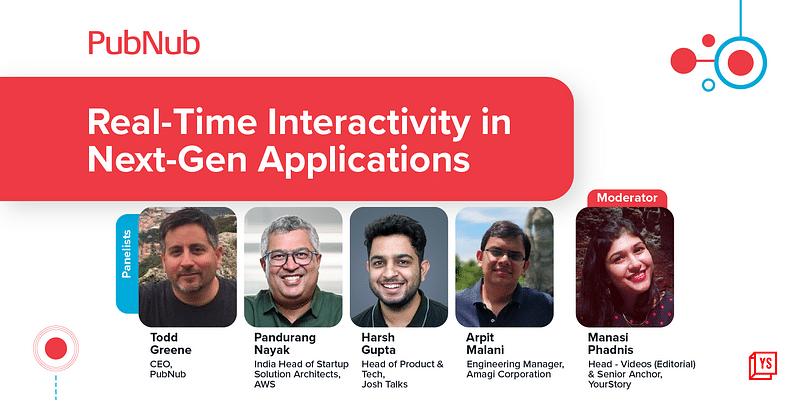
Seeing TikTok’s growth from an obscure karaoke app to a global phenomenon tells a tale of convergence between social media, gaming and streaming, while Snapchat’s rise is largely due to its groundbreaking stories format, now copied by almost everyone. Everywhere we look, we witness the need for real-time interactivity.
The world has evolved into a digital age, which means we now have several options in terms of how we spend our time, which makes it necessary for next-generation apps to be more appealing and interactive. Development teams today must adapt to these changing consumer expectations of real-time experiences, including in-app chat, geolocation capabilities, live collaboration, IoT device control and more.
However, there is one question that many are asking: Can teams integrate real-time infrastructure efficiently and focus on innovation at the same time?
Next generation is already here
“We are already living in the next generation, and specially after COVID we are in the generation where apps tend to have a lot of real-time features, whether it is tracking on food delivery or a live event,” said Pandurang Nayak, India Head of Startup Solution Architect, Amazon Internet.
In his opinion, chat and messaging have always been available on mobile apps, but with only one way of delivering data and live updates to customers; however things have changed. People have access to the internet at all times through various devices and apps. Fintech, healthcare, logistics, ecommerce, everything involves real-time.
Speed is the key
Speaking about the pros and cons from his own experience, Harsh Gupta, Head of Product & Tech, Josh Talks explained the importance of building something fast and testing it. As for the tried-and-true method that has worked for them, they build something fast, test it, prove it works or prove it does not, discard it, and keep building if it works. But at the end of the day, the key to delivering value to users is speed as opposed to optimising.
Arpit Malani, Engineering Manager, Amagi Corporation, expressed a similar opinion stating that if you wish to implement a new feature on your applications, you should not wait for a long time. Moreover, technology is evolving at a phenomenal pace, which is why he suggests having a full ecosystem of partners, including a growth partner, to help you focus on innovation and make your business more future-proof.
We need scalability and flexibility now more than ever
The panel of experts discussed key requirements during the session, with Todd pointing out that new protocols and methodologies are emerging every day. The distribution of features becomes considerably more challenging for development teams, who are expected to be global experts on the latest technologies as well as provide what businesses are funded to accomplish.
It is possible, however, to stay on top of the latest and greatest technology by using platforms such as PubNub, including usability and scale, as well as meeting regulatory compliance requirements in the regions where your products are located.
Summing up
Todd wrapped up the session by quoting William Gibbs, “The future has already arrived, but it is not widely distributed.“
As we consume applications on the go, real-time interactivity is certain to play an important role. While we will still have a lean-back experience, personalisation will allow us to choose how we engage.
We need to tailor product strategies to business needs, using platforms like PubNub as a way to differentiate our product because it is reliable. It’s efficient. It’s fast. It’s everything your business may be looking for.





![Read more about the article [Funding alert] Dream Sports on dream ride towards decacorn valuation](https://blog.digitalsevaa.com/wp-content/uploads/2021/08/Imagesxu4-1616596856899-300x150.jpg)




